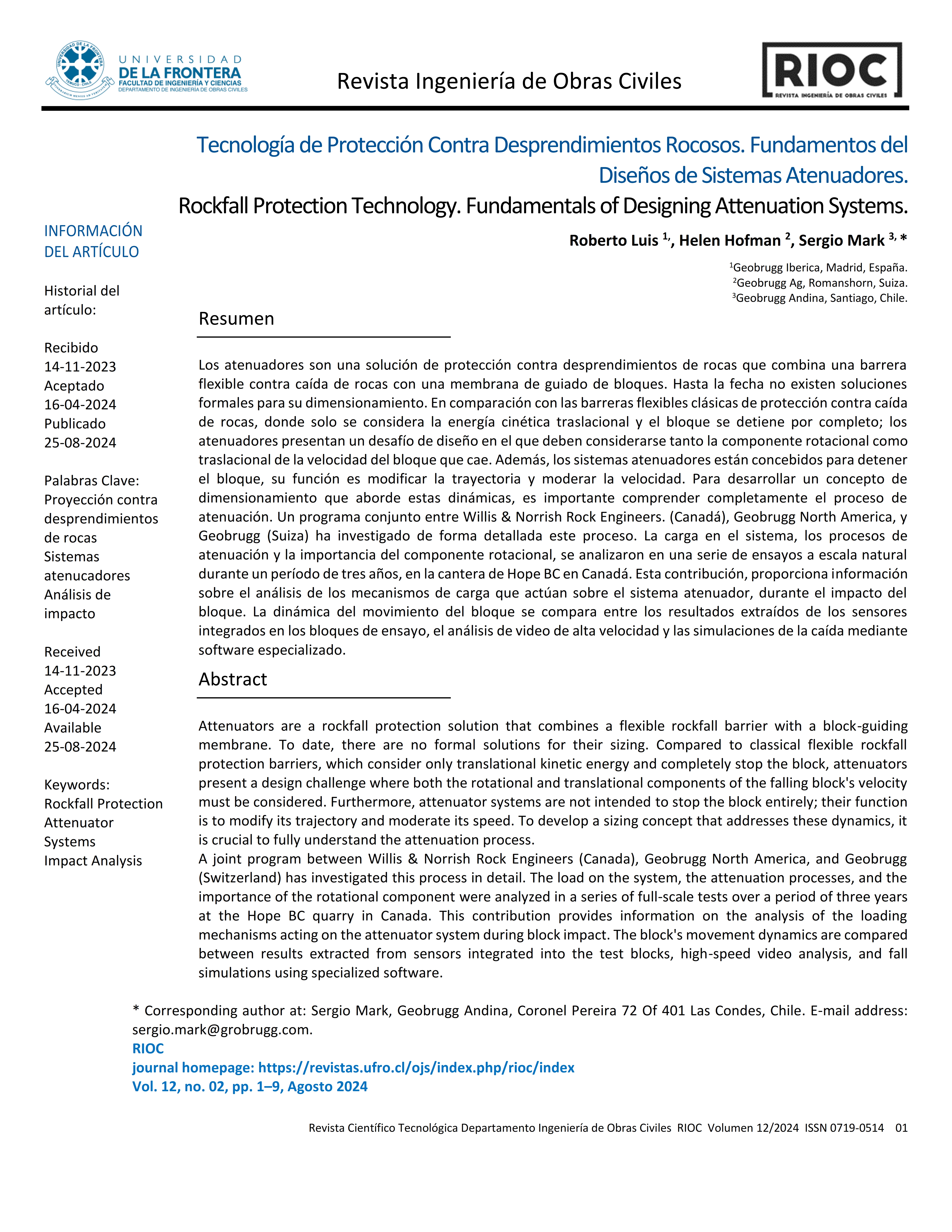Tecnología de Protección Contra Desprendimientos Rocosos. Fundamentos del Diseños de Sistemas Atenuadores
Palabras clave:
Proyección contra desprendimientos de rocas, Sistemas atenuadores, Análisis de impactoResumen
Los atenuadores son una solución de protección contra desprendimientos de rocas que combina una barrera flexible contra caída de rocas con una membrana de guiado de bloques. Hasta la fecha no existen soluciones formales para su dimensionamiento. En comparación con las barreras flexibles clásicas de protección contra caída de rocas, donde solo se considera la energía cinética traslacional y el bloque se detiene por completo; los atenuadores presentan un desafío de diseño en el que deben considerarse tanto la componente rotacional como traslacional de la velocidad del bloque que cae. Además, los sistemas atenuadores están concebidos para detener el bloque, su función es modificar la trayectoria y moderar la velocidad. Para desarrollar un concepto de dimensionamiento que aborde estas dinámicas, es importante comprender completamente el proceso de atenuación. Un programa conjunto entre Willis & Norrish Rock Engineers. (Canadá), Geobrugg North America, y Geobrugg (Suiza) ha investigado de forma detallada este proceso. La carga en el sistema, los procesos de atenuación y la importancia del componente rotacional, se analizaron en una serie de ensayos a escala natural durante un período de tres años, en la cantera de Hope BC en Canadá. Esta contribución, proporciona información sobre el análisis de los mecanismos de carga que actúan sobre el sistema atenuador, durante el impacto del bloque. La dinámica del movimiento del bloque se compara entre los resultados extraídos de los sensores integrados en los bloques de ensayo, el análisis de video de alta velocidad y las simulaciones de la caída mediante software especializado.
Descargas

Descargas
Publicado
Cómo citar
Número
Sección
Licencia
Derechos de autor 2024 Roberto Luis , Helen Hofman , Sergio Mark

Esta obra está bajo una licencia internacional Creative Commons Atribución 4.0.
Los autores/as que publiquen en esta revista aceptan las siguientes condiciones:
- Los autores/as conservan los derechos de autor y ceden a la revista el derecho de la primera publicación, con el trabajo registrado con la licencia de atribución de Creative Commons, que permite a terceros utilizar lo publicado siempre que mencionen la autoría del trabajo y a la primera publicación en esta revista.
- Los autores/as pueden realizar otros acuerdos contractuales independientes y adicionales para la distribución no exclusiva de la versión del artículo publicado en esta revista (p. ej., incluirlo en un repositorio institucional o publicarlo en un libro) siempre que indiquen claramente que el trabajo se publicó por primera vez en esta revista.
- Se permite y recomienda a los autores/as a publicar su trabajo en Internet (por ejemplo en páginas institucionales o personales) antes y durante el proceso de revisión y publicación, ya que puede conducir a intercambios productivos y a una mayor y más rápida difusión del trabajo publicado (vea The Effect of Open Access).



